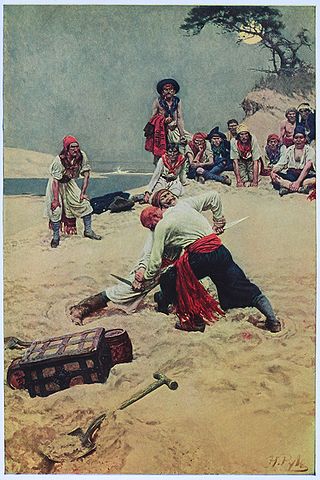The Fine Art of Illustration
Art and illustration, illustration and art. Which is which, and when it comes to representational art, is there a difference? Well, termed this way, the short answer is no. Saying that illustration isn’t art would be like saying that photography isn’t art, and there’s really no argument for that. More apt language might be to ask whether illustration is fine art. My initial response to this query is – why do we care? But before we get to that, let’s get the skinny on where the distinction might lie.
Fine art is usually considered to be something one would hang on one’s wall or put in his or her yard. It’s a stand alone visual creation (setting aside the other fine arts, such as music and literature, for the time being) that exists solely for the purpose of expressing beauty, or making some other statement, without direct connection to any related article or expression. Illustration, on the other hand, is an art piece that exists primarily to clarify or add interest to another creative work, such as a book, news article, or music album. In many cases, the illustration will leave the viewer with many loose ends as to its meaning once the accompanying text is removed. The illustration may remain beautiful, funny, or evocative on its own, but, bereft of its associated article, leaves one groping for its purpose since its reason for existence is, by definition, to accompany another creative work.

If I may wax sentimental for a moment, I love illustration. I love fine art. As mentioned, both of these are creative art forms and each has its own appeal. Fine art has the advantage of being unrestricted in its mode and manner of expression. It doesn’t need to fit or match the mood or message of any preexisting idea or creation and therefore gets to set its own parameters. It’s a self-contained, self-justified expression wherein the reason for its existence needs no explanation. This is the ultimate in imaginative freedom – organizing a unique object, made for its own sake. It’s also the reasoning that gives abstract art a place in our cultural lexicon, and is probably the reason why, especially during the late 20th century, representational or “realistic” art was often derisively and universally lumped under the designation of “mere illustration.”
And so we return to the idea of illustration vs. fine art – is there a difference? As stated above, it’s my opinion that there is a difference only in the sense of the object’s intended purpose. That purpose tends to create, in any given illustration, clear markers designating that work as an illustration – such as “commercial” style, and the nature of the characters and activities depicted. However one of those designating markers is absolutely not the representational nature of the image. This would be the topic of another article, but there is no reasonable argument for placing all realistic art in the category of illustration. Indeed, with the passage of time, we’ve seen that much of illustration finds its way into the vaunted halls of fine art, at which point the distinction between the two practically dissolves altogether. Consider the works of Norman Rockwell, Howard Pyle, or N.C. Wyeth for example. Their illustrations were originally designed specifically as such. Yet nowadays, these works can be viewed in bona fide art museums and studied amorously by fine art students for their qualities as independent fine art pieces in their own right. Conversely, fine art portraits and classical paintings are frequently found adorning books in modern bookstores because they happen to fit the subject being presented, turning museum art into commercial illustration! Therefore the distinction between fine art and illustration is really more a matter of context than of origin and of viewer’s perception than the intention of the artist.
